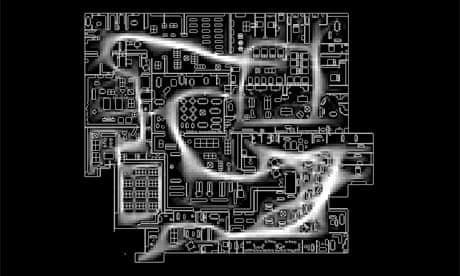"I only went in for some bedding... I came out with two dozen tealights, six wine glasses and a three-piece suite..."
While not everyone's experience of Ikea is as extreme, most shoppers will recognise the sentiment. When I spoke to Alan Penn, professor of architecture at UCL's Bartlett School, he cited an estimate of 60% Ikea impulse purchasing - ie 60% of the stuff rung through the tills at the Scandinavian giant is stuff shoppers didn't know they wanted when they entered the store. And this phenomenon isn't restricted to the blue and yellow Scandinavian giant, we're always making impulse purchases. But why?
A lot is to do with the way shops are laid out – whether that be the areas they're in or the shop floor itself. According to Penn there are three rules of retailing – "location, location, location". For a shop to be a success it needs passing trade and good access.
The right shops need to be in the right place. If you're looking for shoes you don't go to an area full of electrical shops on the off chance there's a Barratts on the corner – you go somewhere with footwear a plenty. The shoe shops are the generators – bringing people in and clustering together to provide choice. Every so often, and somewhere with a lot of passers-by, there's a shop that doesn't fit the pattern ready to take advantage of our fickle shopping nature. These are known as suscipients - they benefit from the customers draw to the area by other shops.
So what about Ikea then? Compare your visit to a trip to the supermarket: would you ever spend the first half hour walking the length and breadth of the store (or is it, in Ikea's case, a maze?) looking at items you don't plan to buy while following a yellow line on the floor? When you reach the marketplace not only are you desperate to shop, you also have an inexplicable urge to buy a set of candlesticks (after all, they looked so nice on that table in the living room scene). Penn says Ikea's confusing layout is designed to disorientate and distract – it forces shoppers to submit to following an arduous path full of subliminal messages and well-placed, unfeasibly cheap products. "I have little doubt that the design to take shoppers past every room setting in the showroom, before they are taken downstairs and led past every product in the 'marketplace' is completely intentional. The sinuous route that results is disorienting and confusing, and leads shoppers to put items in their trolly when they first see them because they cannot be certain that they would find them again."
And the reason we all seem to mindlessly wander along like Disney lemmings? Take a look at the floorplan above. At first glance it appears to be fairly logical - but that is because you are viewing it from above. And therein lies Ikea's trick - they have created a highly confusing environment that is particularly hard to navigate from ground-level. "You can only give in and follow the route they set out for you, because to do anything else is really difficult," explains Penn. "If you want to know where the shortcut is turn around; they are always behind you. Very cunning."
His team's work hasn't just looked at the effects of a well thought out shop floor though, they have also spent time studying the layout of the molecular biology labs in Cambridge, which have produced more Nobel Prize winners than the whole of France. So what makes the lab layout so special? With a lot of open doors and a busy coffee time it appears this is a breeding ground for interaction, discussion and collaboration. "That sort of culture leads to people talking to people they wouldn't speak to otherwise," Penn explains, "we think that's where real innovation comes from." Studying such success stories is part of an ongoing project that will help research laboratories to make the most of their labs, and hopefully increase scientific breakthroughs as well.
Looking at the way architects use space can let us in on all sorts of secrets, whether that be how to promote world-class science or just trying to escape the 'Ikea effect'. But in the meantime, I've just noticed some wine glasses. At that price? Well, I'd better get six then...

Comments (…)
Sign in or create your Guardian account to join the discussion